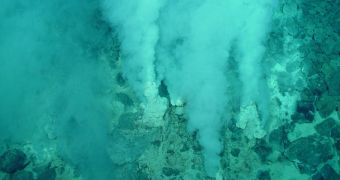A group of 18 investigators from the University of Southern Carolina (USC) will embark on a new expedition to sea today, December 4. Their goal is to study how life appears, develops, and endures in the extremely harsh environmental conditions found around ocean floor structures called hydrothermal vents.
The work is sponsored by the Center for Dark Energy Biosphere Investigations (C-DEBI) at the university and is scheduled to conclude on Christmas Eve. Researchers with the group say that they will get to use underwater robots to explore how life endures on and under the ocean floor.
The target of the expedition is a weird-looking hydrothermal vent located off the coasts of Costa Rica, on the Dorado outcrop. “This is tremendously exciting because the research will help us figure out if most of the water at ocean ridges seeps out slowly or rockets out through vents,” C-DEBI director Han Amend says.
The expedition will be led by University of Alaska, Fairbanks, investigator Geoff Wheat. His group will use two underwater robots to collect samples from deep under the ocean surface, which will then be taken back to the lab and analyzed for signs that may reveal how life endures in these locations.
“Few people in the world have the privilege to go to the bottom of the ocean and explore one of the few remaining frontiers on Earth. We have been envisioning this expedition for nearly a decade,” Wheat says.

 14 DAY TRIAL //
14 DAY TRIAL //